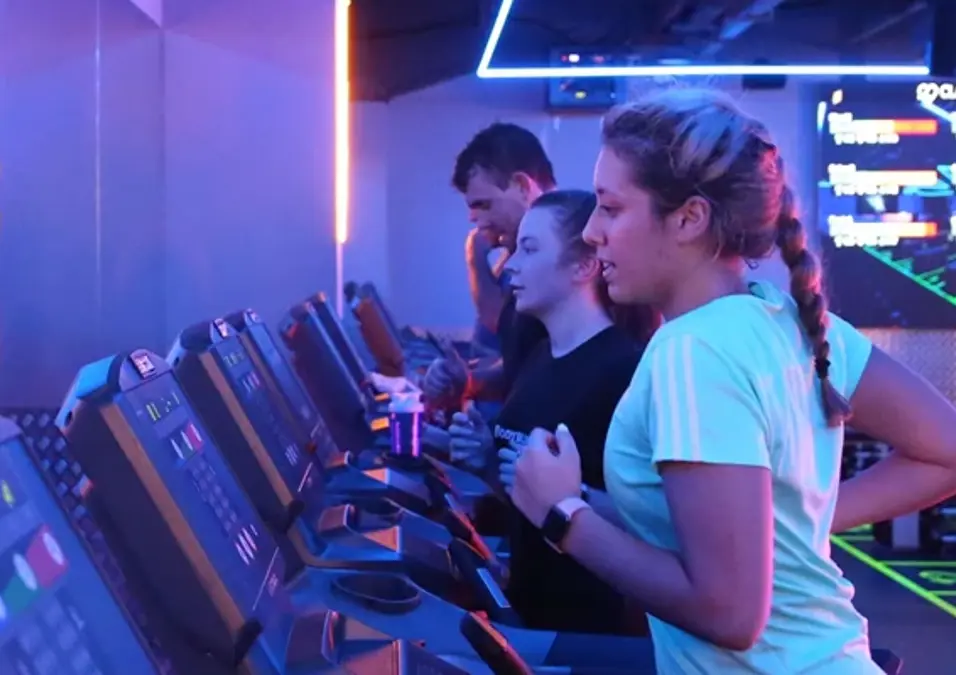HIIT or steady state cardio?

SIGN UP FOR YOUR FREE DAY PASS TODAY!
Cardio is vital to any health and fitness regime. However, it can sometimes feel a bit of a chore. No matter how useful and healthy you know it to be, spending hour after hour jogging or swimming can feel tiresome and, realistically, like a waste of time.
Luckily, there is cardio, and there is cardio. Not all cardio is the same: once you know the difference, and what they can do for you, you can mix things up, keep things fresh and enjoy a wider range of benefits than ever before.
We are, of course, talking about the differences between High Intensity Interval Training (HIIT) and Low Impact Steady State (LISS). The question as to which is best is quite complex: it depends on a range of factors and, perhaps, doesn’t have an answer at all.
With this being said, let’s take a look at HIIT classes in Dubai and LISS individually and see what each form has to offer.
LISS
LISS is what most people think about when they think about cardio. It involves doing a single activity for longer stretches of time, should keep you in the 50-65% heart rate range, and will be great for developing muscles for endurance and aiding in weight loss by creating a caloric deficit. It works the aerobic system, meaning that your body is able to consistently replenish its oxygen reserves and send them to the muscles for energy.
Exercises that makes use of LISS timings include jogging, running, cycling, swimming, running, or cardio machine training at the gym.
Benefits of LISS
Exercise can be stressful on the body- in fact, that’s the whole point. However, going overboard with this stress can bring about several negative side effects, such as fatigue and overtrain. LISS places less stress on your body, so you should be able to train for extended periods of time, fairly frequently.
LISS also often doesn’t take much specialist knowledge to perform (though, of course, some forms might.) You can go out for a jog without any prior training, without any equipment save your clothes and footwear, and with no cost. Cardio machines at the gym can be used by anybody, regardless of their fitness levels or exercise knowledge.
LISS can also aid with weight loss. It involves burning calories quite consistently, if not too efficiently, and so will make it easier to maintain a caloric deficit.
(If you’re not sure whether or not you need, or would like, to lose weight, it’s always worth checking a BMI calculator: this will tell you whether or not your current weight is healthy, and how much your weight needs to change to become healthy).
LISS is great for training your aerobic system, and for training your muscles for endurance, meaning that it’s perfect for those with active lifestyles or who play aerobically demanding sport. Improving your cardiovascular health in this way will also aid in lowering blood pressure, improving heart health, and reducing stress.
The downsides
LISS takes a long time. You need to be able set aside several hours per week to make the most out of it.
It’s also not very efficient. Though you will be burning extra calories as you train, there will be little effect on your metabolic rate post-training, and it will take a long time to burn any meaningful amounts of calories.
Though it is thought of as low-impact, the repetitive pressure inherent to many forms of LISS (running, jogging and so forth) can wear joints down over time and lead to longer term injuries (though it should be noted that there are forms in which this isn’t an issue, most notably swimming and cycling.)
HIIT
HIIT makes use of short, intense bursts of activity in which your heart rate is taken up to the 80-95% region, with periods of rest or decreased intensity between them. It is most commonly associated with compound movements like squats, jumps and deadlifts, or with explosive movements like sprinting or boxing.
Benefits of HIIT
HIIT is a fantastic exercise method for weight loss. You will burn a lot of calories in a very short amount of time by performing it: it works both your anaerobic and your aerobic systems, meaning that a mixture of oxygen, adenosine triphosphate (ATP) and glycogen stores are used for energy. HIIT will typically burn far more fat than LISS.
(Again, if you’re not sure whether or not you need, or would like, to lose weight, it’s always worth checking a BMI calculator).
HIIT also doesn’t take very long. If you’re struggling to get your longer workouts in, simply perform a fifteen-minute HIIT session and get on with your day. Alternatively, schedule it as a quick conditioning exercise at the end of your weight training.
In addition, HIIT classes in Dubai can help to build muscle and strength (which will also aid in fat loss, as muscle is metabolically demanding). You will also experience a heightened metabolism for up to 24 hours after your training.
The downsides
HIIT takes a lot of energy (hence it is good for weight loss), which can be draining. It can also be tough on your body and your joints and will likely take longer to recover from. There may also be complex movements to learn in order to properly make the most out of HIIT sessions (though a HIIT class will usually set you right here, and there are plenty of HIIT classes in Dubai to choose from).
You won’t be able to perform HIIT workouts as often as LISS, though each individual session may end up giving you far more benefit.
So, which is best? Neither.
Which should you choose? Probably both.
If you mix LISS and HIIT, going out for walks, runs or cycles a couple of times each week, and attending a HIIT class a couple of times, you will be getting the best of both worlds. It will be sustainable and efficient, giving you a host of benefits.
GET YOUR FREE TRIAL TODAY














































































